Martin Luther University Halle-Wittenberg
9 October 2019

Understandable knowledge transfer with Sennheiser SpeechLine DW
Halle/Wedemark, 9 October 2019 – Martin Luther University Halle-Wittenberg (MLU) uses Sennheiser wireless systems in its lecture halls and seminar rooms to convey the spoken word in the best possible audio quality. It currently has 53 (!) wireless channels from the Sennheiser SpeechLine Digital Wireless series operating in the DECT range. The systems are spread around different university locations and were installed successively over a period of two years. The conversion from UHF to DECT frequencies has not yet been completed at Martin Luther University – an application to purchase further Sennheiser wireless systems has already been made. The homogeneous wireless equipment at the Universitätsplatz, the Steintor Campus, the Weinberg Campus and the Francke Foundations simplifies both handling and servicing.
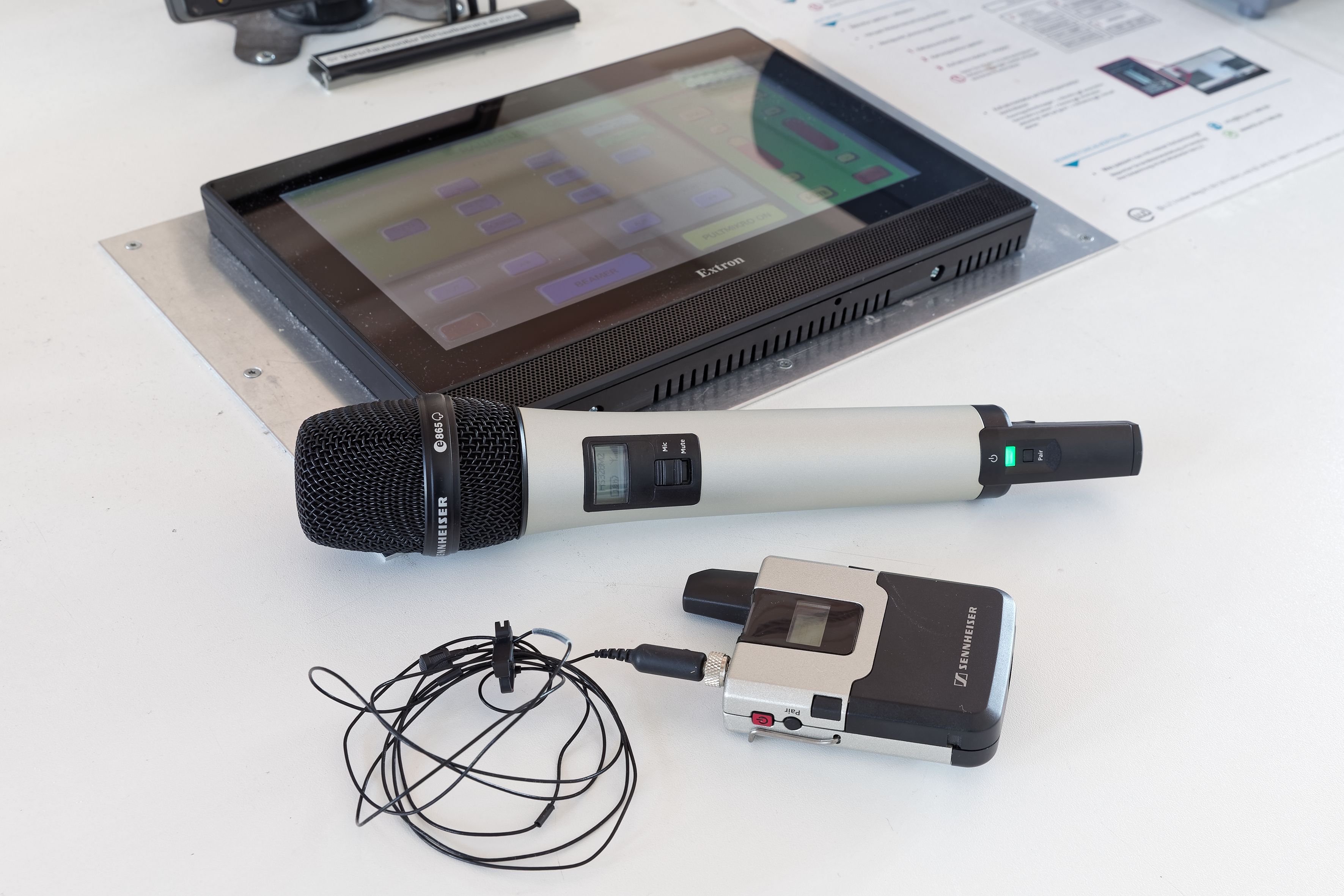
Up to three SL Rack Receiver DW units are used in typical lecture halls at MLU. These are employed together with wireless table microphones (SL Tablestand 133-S DW) and handheld or bodypack transmitters. The SL Handheld DW transmitters are all equipped with MME 865-1 super-cardioid condenser capsules, while the SL Bodypack DW transmitters are operated with clip-on or head-worn microphones. The lavalier microphones (Sennheiser MKE 1 with omnidirectional pick-up pattern) are always kept in the lecture halls and seminar rooms on the Weinberg Campus, while the SL Headmic 1 head-worn microphones (omnidirectional pick-up pattern) together with their corresponding bodypack transmitters are issued to the teaching staff each semester, not least for reasons of hygiene, and are stored in their offices. At other MLU sites, the transmitters are handed out at a central location.
Homogeneous equipment: DECT instead of UHF throughout the campus
The Sennheiser SLDW wireless systems were supplied and installed by Studio-Elektroakustik GmbH, Leipzig. This renowned system supplier celebrated its 60th anniversary in 2018. The project manager responsible was Bernd Schiller, who has decades of experience in media technology, has carried out numerous projects for public broadcasting companies and describes Sennheiser as the “Mercedes among wireless systems”.
At MLU, wireless UHF transmission systems from various manufacturers have been systematically replaced by Sennheiser SpeechLine DW systems. “The previous system landscape was very heterogeneous and we were continually having problems with individual frequencies at all of our locations,” said Karsten Schröder (Unit 4.2 – Infrastructural Facility Management), who is responsible for lecture hall equipment at the Weinberg Campus. Schröder does not like to remember the serious problems caused by two Digital Dividends: “First of all, we were told that, following the auction of the wireless spectrum in 2012, the frequency ranges that had been allocated to us were safe for the time being – but just a short time later, Digital Dividend 2 meant that we needed to act again. In the end, Digital Dividend 2 was the reason why we had to completely rethink our wireless equipment strategy at MLU.”
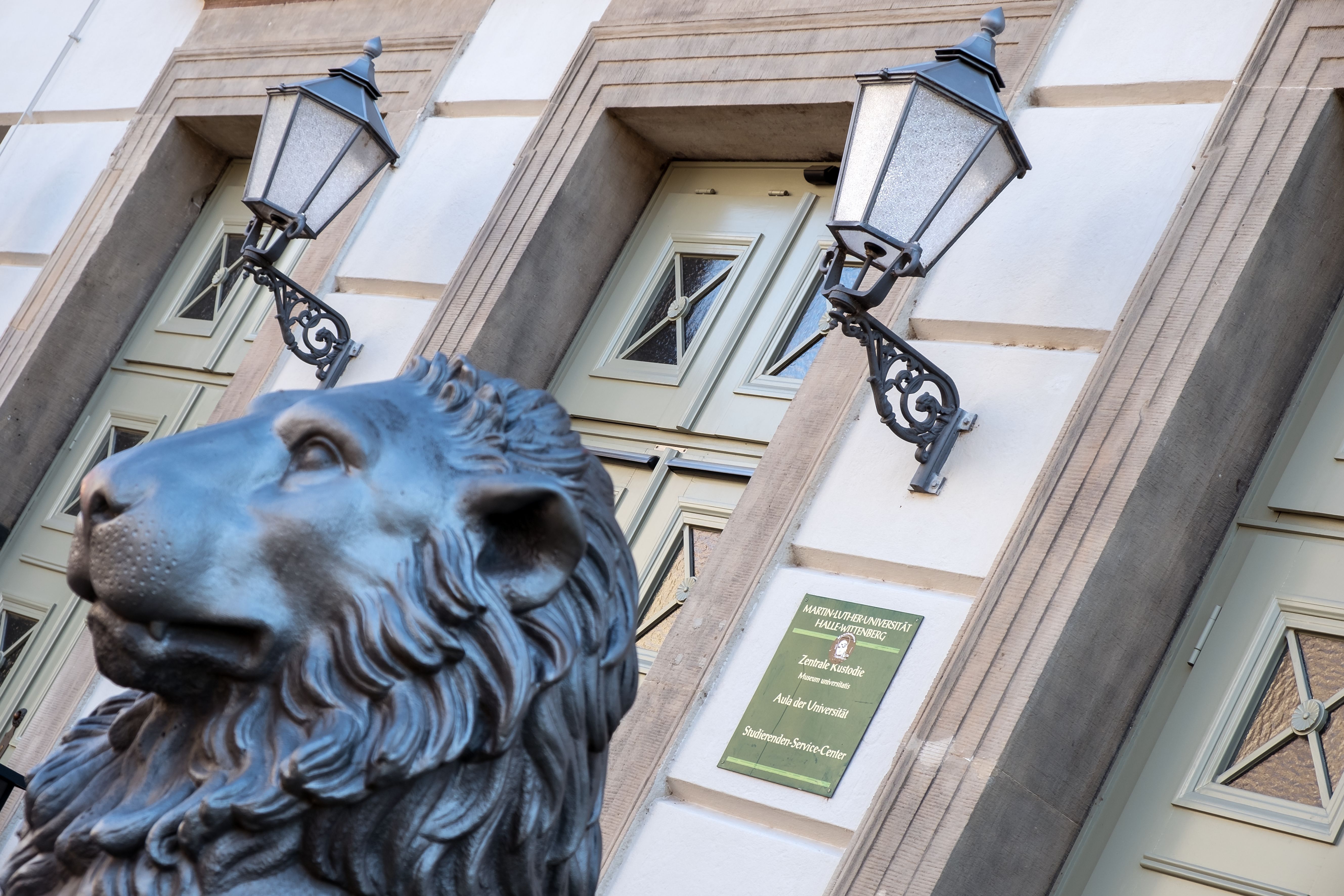
With Sennheiser SpeechLine DW and transmission in the DECT range, Karsten Schröder and his colleagues are now certain that their equipment is future-proof. Schröder: “I don’t want to have to worry about other frequency segments being blocked off in the future, and I hope that by using DECT technology at MLU we will not be affected in the long term by changes in the allocation of frequencies for wireless production equipment.”
Uniformly structured Sennheiser wireless technology is now available to teaching staff at all MLU locations. The consistent operating philosophy ensures above all that lecturers can concentrate on their real work and no longer have to think about how to operate the media equipment. The staff responsible for the technical equipment at MLU often have to change from one location to another, for example to provide holiday cover, and the new system reduces their work load, especially because they rarely have to respond to support enquiries concerning the wireless equipment.
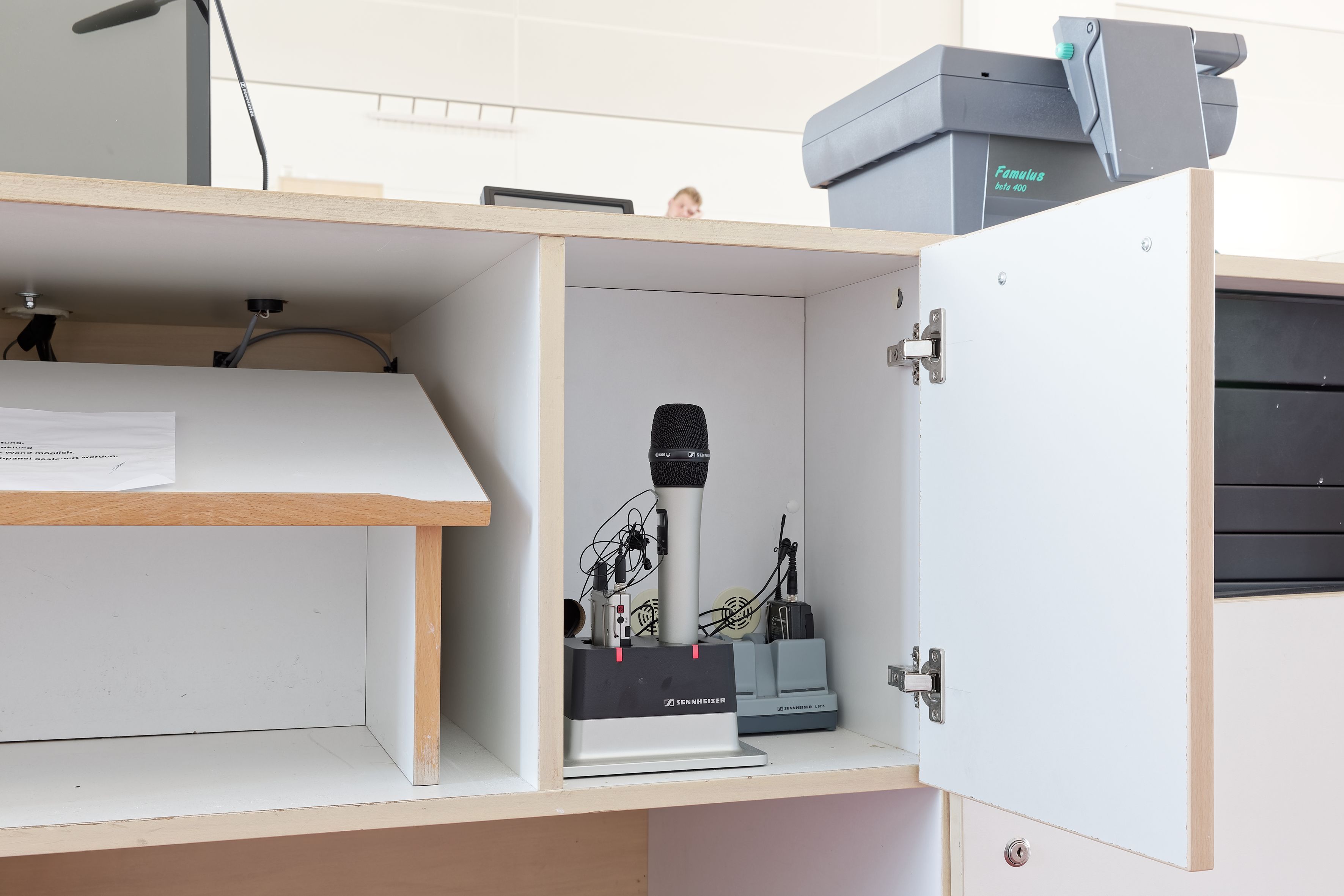
SpeechLine DW in the lecture hall
At MLU, the SpeechLine DW systems do their job almost without being noticed. According to Karsten Schröder, there has not been any interference from DECT telephones so far, and the unavoidable latency of 19 milliseconds caused by the transmission process is of no consequence either. The working range of SpeechLine DW is also more than sufficient to cover all of the room sizes at MLU without any restrictions. The university uses the antennas that are supplied as part of the system. Only the auditorium of the “Lions’ Building”, where as many as six Sennheiser SpeechLine DW are in operation, employs remote antennas. There is no risk of feedback in the lecture halls and seminar rooms as the maximum level of the PA systems has been set in such a way that feedback loops cannot occur.
Among the internal DSP possibilities offered by the Sennheiser SpeechLine DW systems, speech-optimised equalizer presets are used: “In those lecture halls that are predominantly used by female teaching staff, we have activated the ‘female’ preset,” said Karsten Schröder. “However, we do not use the seven-band graphic equalizer and the lowcut filter.” The fact that the Sennheiser SpeechLine DW automatically adapts its input sensitivity to the current voice level has proven to be extremely useful in practice. According to Schröder, the possibility of AES encryption is not relevant for use on the campus: “The larger lecture theatres are equipped with AV systems to enable lectures to be recorded, which means that, if the lecturers give their consent, content will increasingly be digitally archived in the future anyway.”
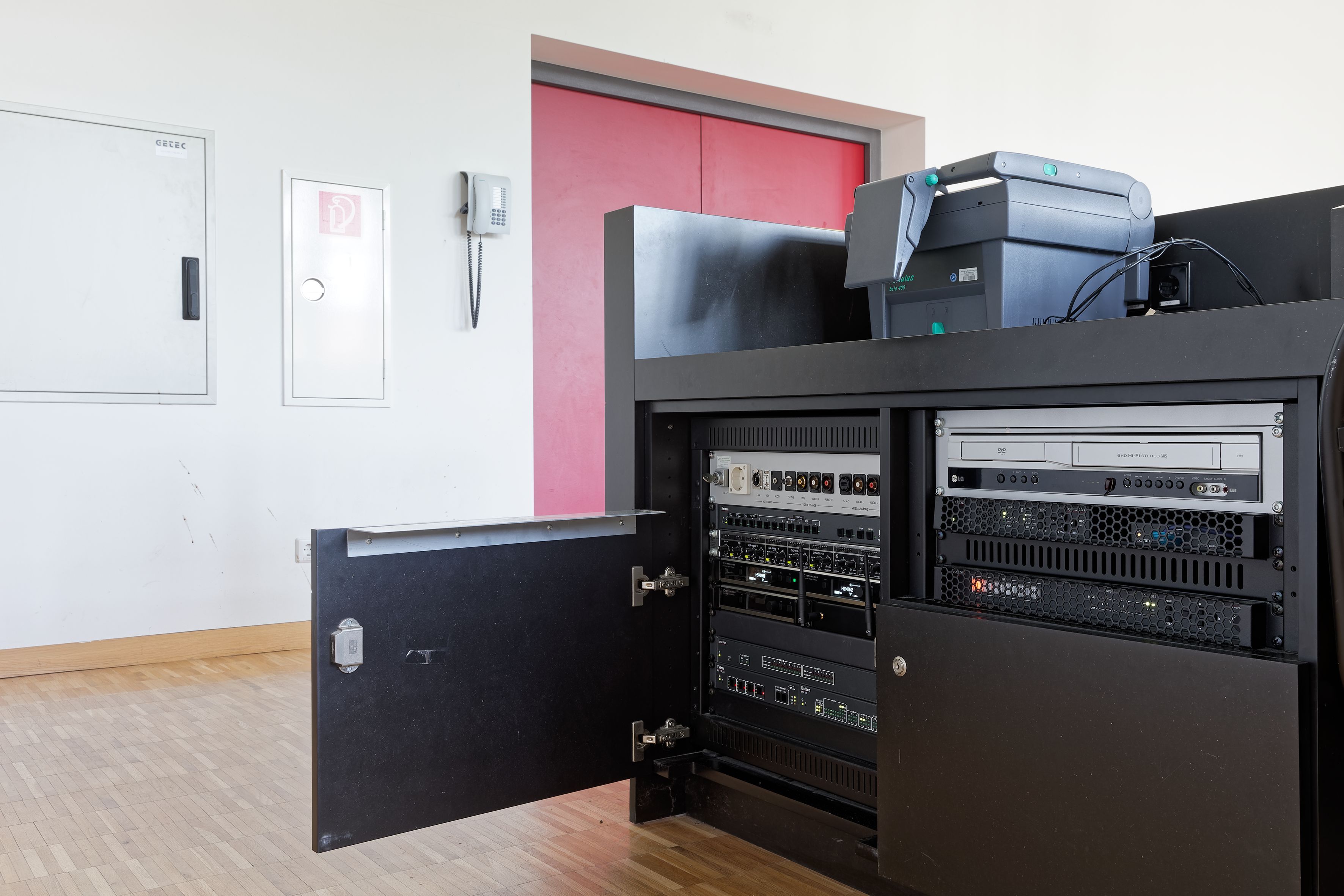
Karsten Schröder and Bernd Schiller are fully in agreement in praising the robustness of the Sennheiser products: “That really is a huge advantage, as it’s not a rare occurrence for handheld transmitters to be dropped onto the table in the heat of the moment,” explained Karsten Schröder.
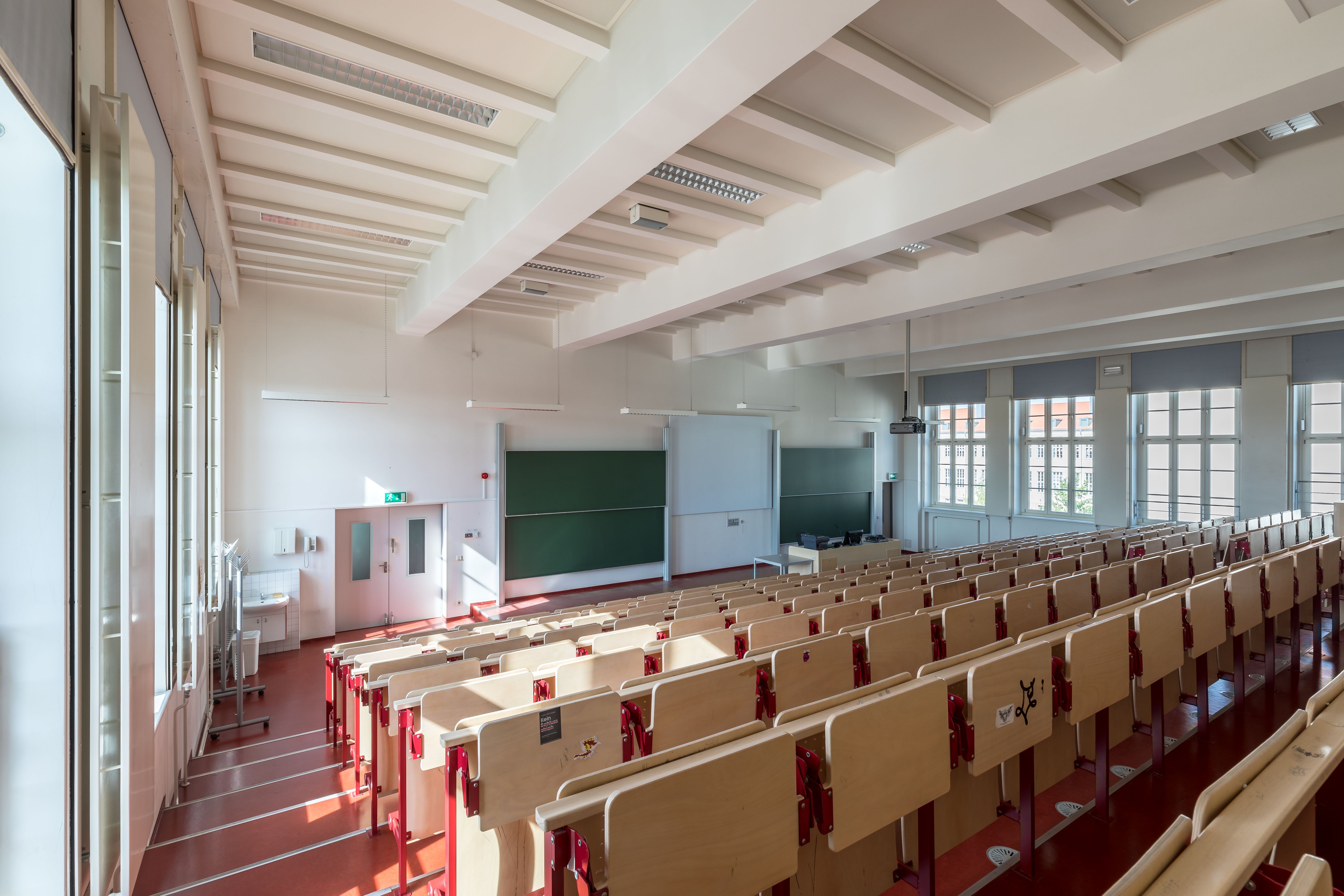
In many lecture halls, the Sennheiser charging equipment (two-slot CHG 2 charging unit) is kept behind a lockable door in the lecturer’s desk. “The operating times for SpeechLine DW with fully charged batteries are incredibly long,” Karsten Schröder confirmed. “During conferences, I can rely on the transmitters working from early in the morning until late in the evening without any problems. The battery status indicator has proven to be reliable.” After being used by the lecturers, the transmitters are placed back in the charging units. This functions without problems in practice and, due to the obvious discipline of the users, always ensures that the batteries are fully charged. “With SpeechLine DW, we no longer have to waste time changing batteries all the time,” said Karsten Schröder, pleased about one of the many advantages of Sennheiser SLDW wireless systems.
In the future, in coordination with the IT managers, the SpeechLine Digital Wireless systems at Martin Luther University Halle-Wittenberg will form an integrated network that interconnects the various university locations. Sennheiser Control Cockpit software will then provide user-friendly remote control and monitoring of all the wireless systems that are connected.
Learn more about SpeechLine Digital Wireless and the Control Cockpit software, or discover our comprehensive business portfolio at www.sennheiser.com/business.
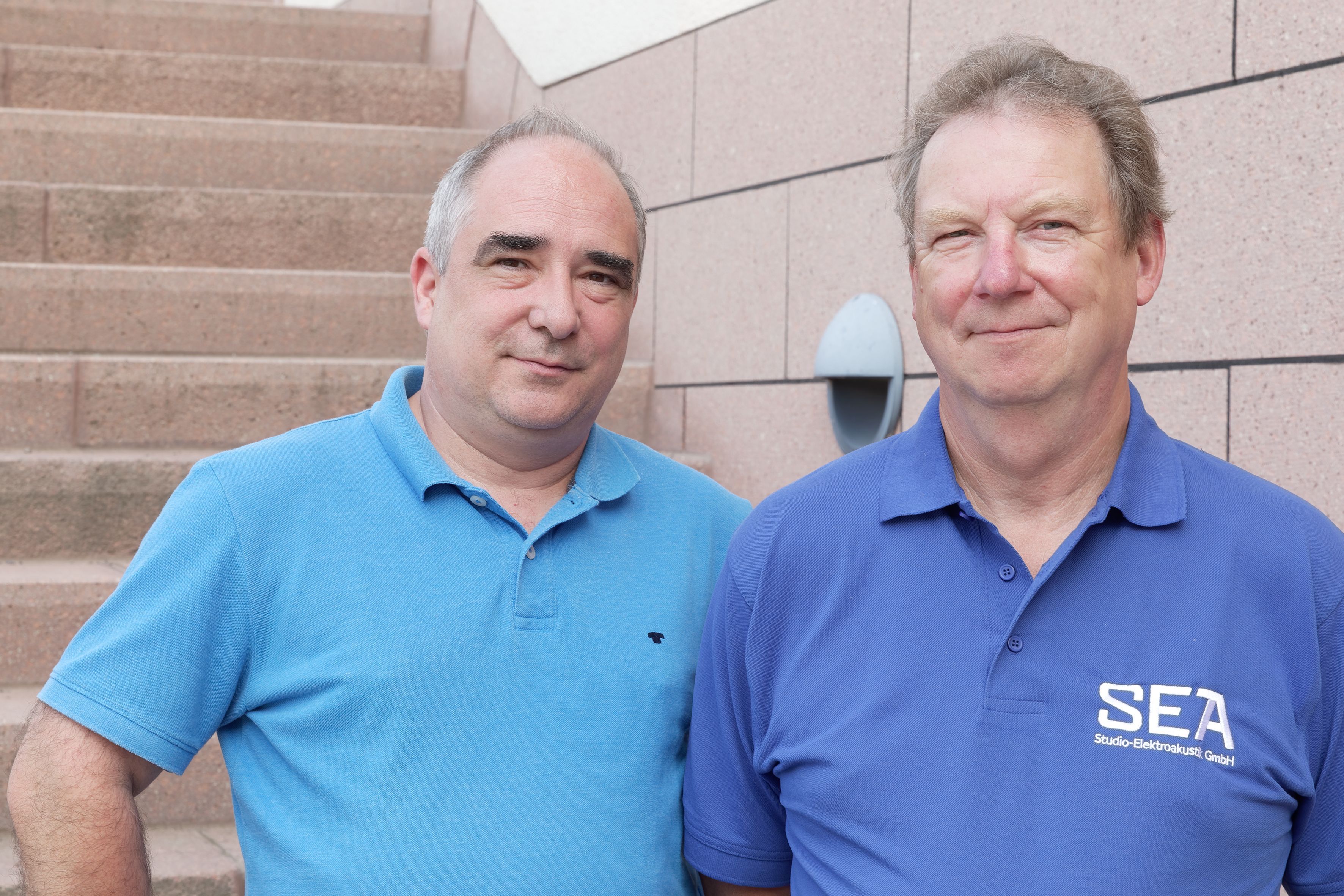
MLU: Creating knowledge. Since 1502
Education and research with a 500-year-old tradition: Martin Luther University Halle-Wittenberg (MLU) offers a wide range of academic subjects in the areas of humanities, social sciences, natural sciences and medicine. The oldest and largest university in Saxony-Anhalt was created in 1817 when the University of Wittenberg (founded in 1502) merged with Friedrichs University Halle (founded in 1694). Today the university has around 20,000 students and 340 professors.
MLU’s academic profile in the field of the humanities is shaped by the core research areas “Enlightenment – Religion – Knowledge” and “Society and Culture in Motion. Diffusion - Experiment - Institution”. The university’s core scientific research is in “Materials Science – Nanostructured Materials” and “Biosciences – Structures and Mechanisms of Biological Information Processing”. Agricultural sciences also play a leading role and Halle’s university bears sole responsibility in Saxony-Anhalt for developing this academic profile. The Faculty of Medicine focuses on epidemiology, health and nursing research and research on signal transmission. Here nursing scientists conduct research on an equal footing with physicians. The Dorothea Erxleben Learning Centre is one of the largest teaching clinics for prospective medical professionals. In addition to its main academic focuses, the university offers a range of minor subjects, some of which are only offered in Germany at MLU.
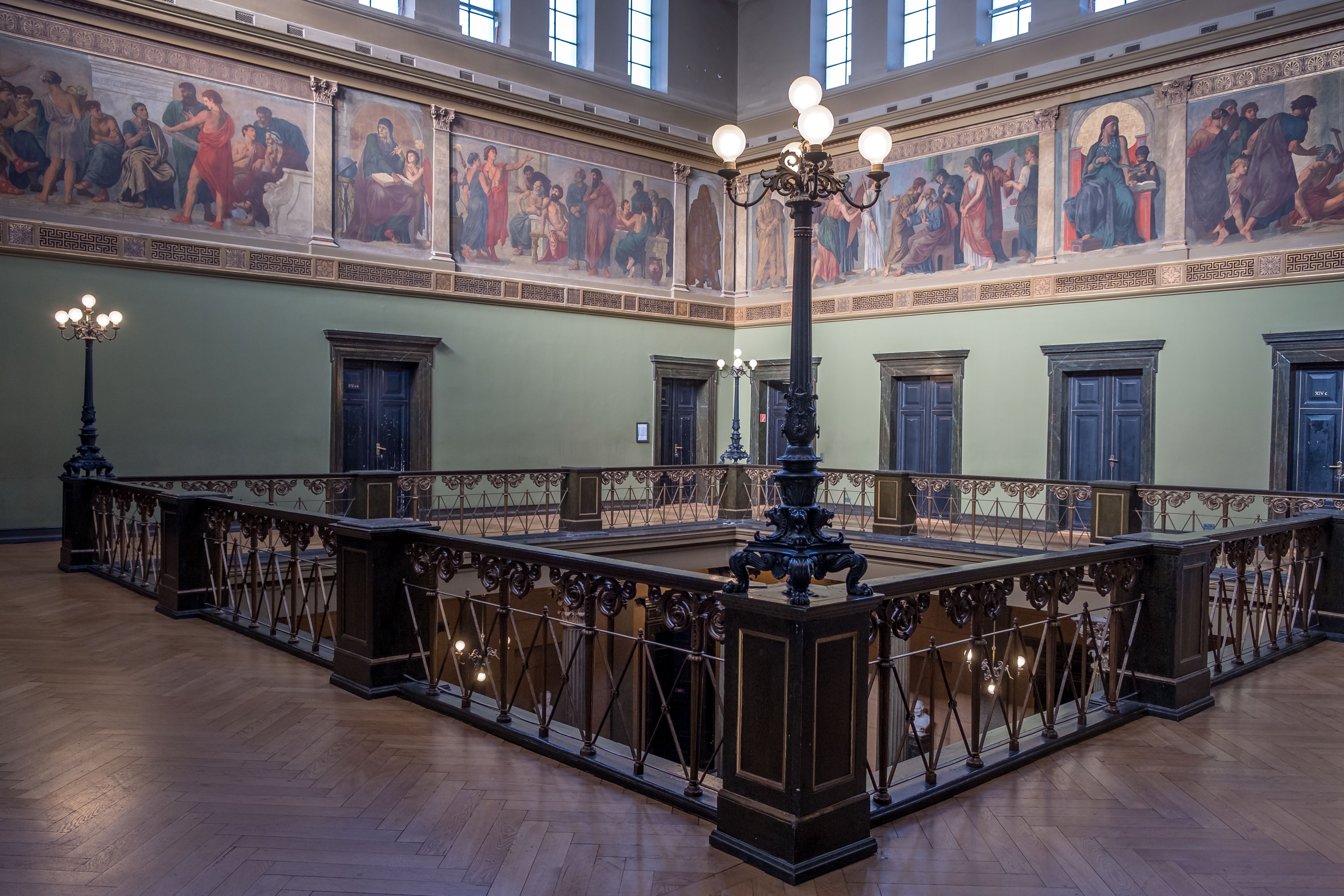
As a member of the Central German University Alliance Halle-Jena-Leipzig, MLU cooperates closely with other universities, and with external research institutes and industries. This is visible at a local level on the Weinberg Campus, the second largest technology park in Eastern Germany. All of the university’s natural science institutes are concentrated here. They work in partnership with companies and major German research institutes, such as the Max Planck Society and the Fraunhofer-Gesellschaft. Halle’s university has a broad-reaching network of partner universities throughout the world.
In addition to the Weinberg Campus, MLU has three other main locations. The centrally located University Square is one of the most beautiful university squares in Europe and it is a site in Halle that is steeped in tradition. Many institutes focusing on the humanities and social sciences are located on the new Steintor Campus. Educationalists and theologians teach, study and conduct research at the Francke Foundations.

Kirsten Spruch
Media and Influencers Relations Manager – Americas & ANZ (Los Angeles, USA), Sennheiser

Stephanie Schmidt
PR Manager Professional Audio, Sennheiser electronic SE & Co. KG
 SpeechLine Digital Wireless provides excellent audio quality for the lecturers at MLU during classes
SpeechLine Digital Wireless provides excellent audio quality for the lecturers at MLU during classes







